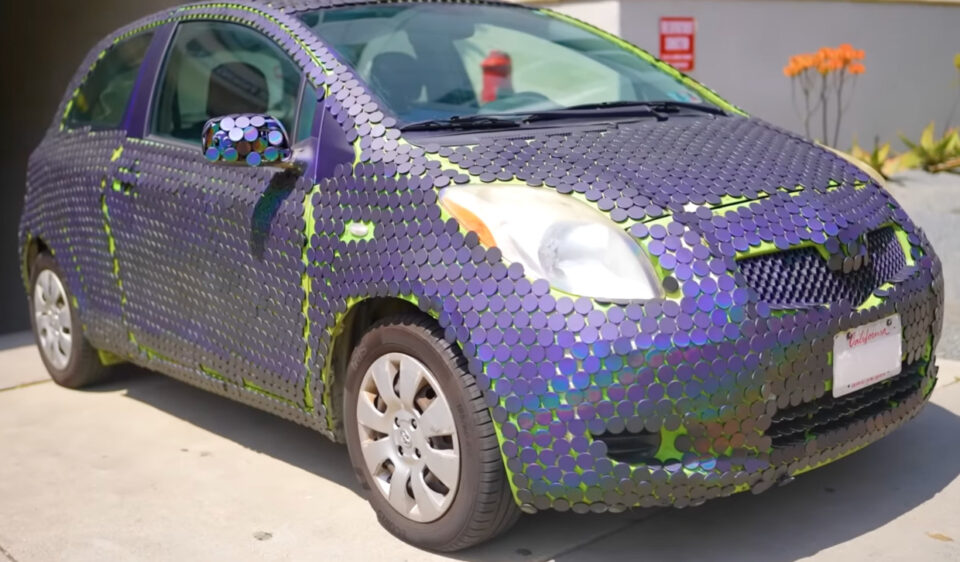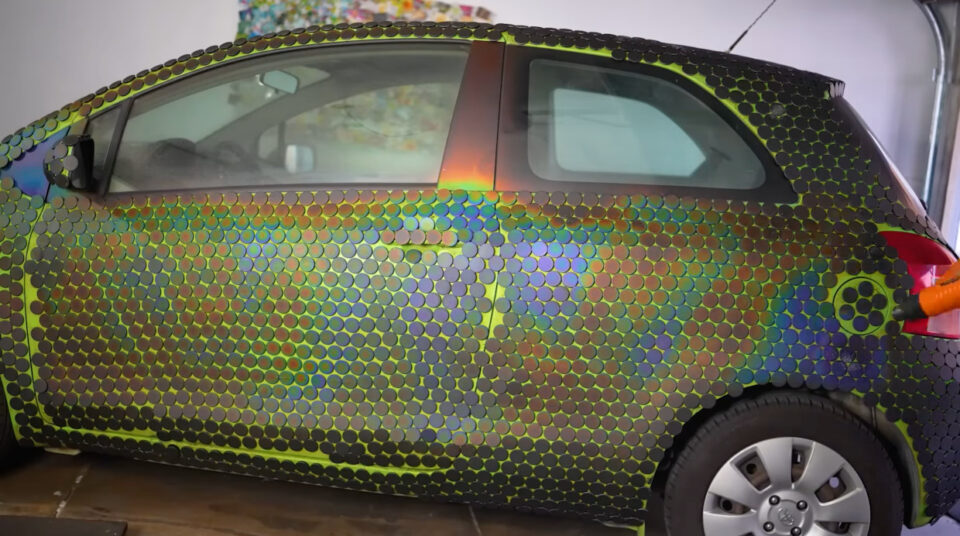
Presumably curious how her car feels at any given moment, Youtuber Ali Spagnola covered it with 9,000 PopSockets, which she painted with thermochromic liquid crystal paint so they change color based on temperature, just like a mood ring. Wait — so mood rings aren’t sensing my mood, just temperature? 9-year old me demands a full refund!

The disks appear black at cooler temperatures but turn to violet, blue, green, yellow, orange, and red the warmer they get. Live in Arizona? Then you’ll always be driving a red car. Live in Alaska? Then a black car.
I imagine my car would constantly be red with anger at the way other motorists are driving. There…aren’t a lot of good drivers around here. You’d think new cars don’t even come with turn signals. Or even old cars, for that matter. They all definitely have horns, though!
[via TheAwesomer]